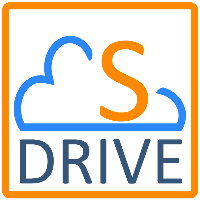Welcome to S-Drive! Here you’ll find the layout of this guide and some terminology.
S-Drive is a document storage solution that is native to Salesforce. With S-Drive, files are stored in Amazon AWS S3 bucket and accessed through Salesforce using S-Drive file records. Files can be organized into folders and there is no limit to the size of files that can be uploaded or stored.
This page gives a general layout of the Admin Guide.
Getting Started - Account Setup and S-Drive Installation (this section)
Here, you’ll set up the pre-requisite accounts needed for S-Drive and install and activate S-Drive.
Getting Set Up - AWS and Portal Accounts tells you how to set up your S-Drive Portal Account and AWS Account.
INSTALLING AND ACTIVATING S-DRIVE tells you how to find S-Drive from the AppExchange and walks you through setting up your AWS access and bucket, and connecting your Salesforce org though our portal.
Configuring S-Drive
In these sections, you’ll learn how to set up S-Drive on out-of-the-box objects and, if needed, on Custom Objects.
S-Drive Configuration: Org-Wide Configuration walks you through all the things an admin can configure for the organization.
Managing your Buckets explains how to add or delete buckets and change bucket settings.
CONFIGURING S-DRIVE ON STANDARD OBJECTSshows you how to add the S-Drive file area to standard object pages so you can begin uploading and accessing files. At this point, you are ready to use S-Drive.
CONFIGURING S-DRIVE ON CUSTOM OBJECTSexplains how to create an S-Drive File Object for a standard or custom object other than Accounts, Cases, etc.
Features
S-Drive is feature-rich. In these sections, we’ll explain what the features are and how to use them.
Bucket Features
These are features related to the bucket,
UI Customizations and Lightning Components
These are features related to how S-Drive looks to users.
Popular Features
Here you’ll fine our most commonly used features, such as File Sync, Shortcuts, and Preview and Thumbnails.
Add-On Features
These features are an extra cost and include things like Desktop Experience, Docufetch and E-Signature.
Profile Permissions, OWD, and Sharing Rules
This section explains the permissions and sharing users need to access S-Drive files
Flows with S-Drive
Here we describe how to use certain S-Drive features in Flows.
Using S-Drive in Digital Experiences
Here you can see how to add S-Drive to your digital experience
S-Dive on Salesforce Mobile App
S-Drive can be used in the Salesforce Mobile App
Terminology
S-Drive Tab
With S-Drive, you can upload files to any standard or custom object record. In addition, there is an "S-Drive Tab" where you can store files that aren't related to any specific object. This can be used for company-wide documents for example. Files on the S-Drive Tab (not associated with a standard or custom object) are stored in an object called S3Object.
S-Drive File Objects
Each custom or standard object that you want to use S-Drive with has a corresponding S-Drive File Object where the information about the files is stored. This is a custom object that has a master-detail relationship with the object the files are associated with. For example, Accounts has an associated object called AccountFiles. For Accounts, Cases, Contacts, Opportunities and Leads objects, S-Drive File Objects have already been provided as part of the S-Drive package. For other standard objects, or for your own custom objects, you can create the associated S-Drive file object through the S-Drive Configuration tab. These objects should have permissions enabled in the profiles of users using them.
Other S-Drive Objects
In addition to the S-Drive objects that hold file information, there are other S-Drive objects that relate to various features of S-Drive. These objects should have permissions enabled in the profiles of users using S-Drive.
-
AttachmentSyncs
-
File Activities
-
MyS3Objects
-
Previews
-
S3Configs
-
S3Objects
-
SDriveCustomActions
-
SQueues
-
SURLS
-
SURL Hits
